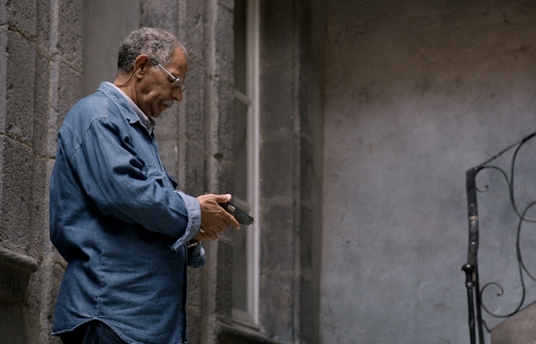Algerian Cinema: Caught between past and present - Part III
Nov 11, 2012

Fidaï (2012)
The future.
By DFI Programming Team
The 1990s proved to be the turning point for Algerian cinema as a large part of its production moved to the territories of its former colonial master. The dismantling of the public film sector and the spread of political terror forced those filmmakers like Merzak Allouache who had not left already due to the unfavourable production conditions into exile. Allouache came back in 1994 with French money to complete a sequel of his first film ‘Omar Gatlato’ (1976), ‘Bab El-Wad City’ that was set in the same neighbourhood of Bab El-Wad. It used a similar set of characters playing in the decisively different circumstances of the 1990s though which saw the country strangled by reciprocal Islamist and state violence.
The female question moved into the centre of attention. Some of the few films that were made in this period, such as ‘Touchia’ (1993) by Mohamed Rachid Benhadj set out for a double criticism of patriarchial domination, blaming at once religious fundamentalism and the national liberation forces in power for the oppression of women. The same orientation was found in the works of the first female directors who started to appear during that period, to name only a few: Hafsa Zinai-Koudil, Yamina Bachir-Chouikh, Nadia Cherabi and Djamila Sahraoui, whose second full length feature ‘Yema’ (2011) still displays the same concerns with regards to women’s status in Algerian society as its predecessors.
Algeria’s ‘dark decade’ saw another important development – the appearance of works informed by Amazigh Berber culture and language. Examples include Belkacem Hadjadj’s ‘Machaho’ (1995) and ‘Baya’s Mountain’ (1997) by Azzedine Meddour. This diversification and pluralist tendencies implied also the France-based output by among others Mahmoud Zemmouri and Okacha Touita who either shed light on the history of racism and oppression that faced early Algerian immigrants in France or dwelled ironically on the clash of cultures facing those who had to commute between home and host-land.
At the same time the second generation of Algerian immigrants in France represented among others by Rachid Bouchareb, Mehdi Charef and Abdelkrim Bahloul created the so-called cinéma beur that staged the problems of the community in France. The year 2000 eventually saw French Algerians, like Nadir Moknèche, presenting some of the best North African comedies shot in Algeria. Think only of ‘The Harem of Madame Osmane’ (2000) and ‘Masquerades’ (2008) by Lyes Salem. In contrast Rabah Ameur-Zaimèche, director of ‘The Last Maquis’ (2008) and Damien Ounouri whose ‘ Fidaï ’ (2012) can be seen on this year’s Doha Tribeca Film Festival have distinguished themselves by their either stylistically or thematically daring approaches.
In Algeria itself, cinema needed the advent of the new millennium and the dying down of the ferocious civil war to allow another generation, represented among others by Malek Bensmaïl and Tariq Teguia, to appear and initiate a new wave of documentary and fiction filmmaking that, even though struggling with the burden of past and present conflicts, is heralding a completely new era of Algerian-based independent filmmaking.
Related Posts:
Algerian Cinema: Caught between past and present – Part I
Algerian Cinema: Caught between past and present – Part II